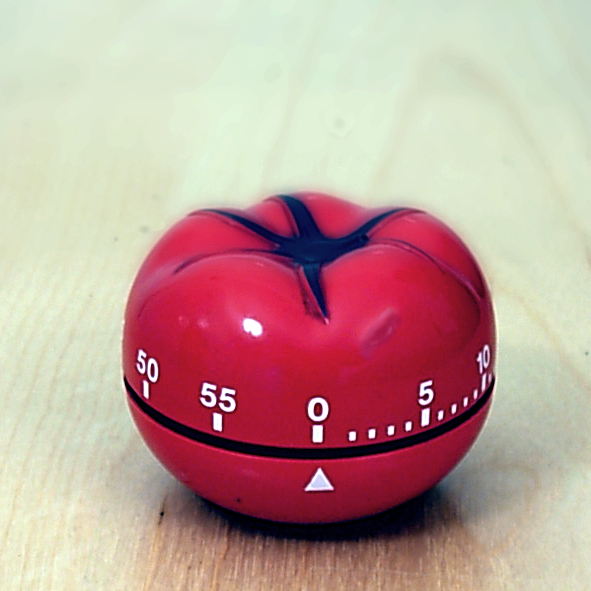I have fallen into spending too much on a task, especially while working at a screen like this one. I get involved in a task and by the time I get up an hour or hours have passed.
Being a virtual worker has its obvious advantages, such as no commuting, variable work hours and days, and working in your pajamas from the couch. It also has its disadvantages, such as allowing you to do nothing and lose track of time. Because most of my work these days is measured in billable hours rather than a salary, it is important that I keep track of how long I work on a project. I need those stats both to invoice clients and to give estimates to new clients.
This was a skill I needed to develop when I shifted my working days to virtual ones. One technique that I started using on my own turns out to have a formal name. More on that in a bit. I stopped using it for a few months but I discovered that I was falling into bad habits – losing track of how long I spent on a task and also not keeping track of my work/billable hours.
This time management and productivity technique is very simple. When you start a task (not a project, but a piece of it), set a timer and work on that task for 25 minutes. Then, take a short break (3-5 minutes). Start working on the task again for 25 minutes and repeat until it’s completed. Not only is that short break good for your brain and concentration but physically it is important for me to get out of a chair and move. I will walk into the kitchen for a drink, take a loop around the backyard garden in the summer, check the mailbox, water the houseplants or whatever. The break can’t be something that will distract you for a longer period.
 Pomodoro tomato timer – CC BY-SA 3.0, Link
Pomodoro tomato timer – CC BY-SA 3.0, Link
I just started doing this on my own and it was only later that I discovered that I was using the Pomodoro Technique.
The Pomodoro Technique is a time management method developed by Francesco Cirillo in the late 1980s. His technique was to use a timer to break down work into intervals, traditionally 25 minutes in length, separated by short breaks of about 5 minutes. Originally, he broke it down into six steps. These intervals are named pomodoros, the plural in English of the Italian word pomodoro (tomato), after the tomato-shaped kitchen timer that Cirillo used as a university student.
The technique has been popularized more recently via a bunch of apps and websites that provide timers and instructions. I just use a cheap digital timer that can count down. The timer counts down from 25 and beeps when 10, then 5, then no minutes remain. It is amazing how quickly those 25 minutes pass when I’m working. It also reminds me sometimes that “OMG, I’ve been at this task for 2 hours!”
This technique is related to several other productivity techniques, such as timeboxing, and iterative and incremental development.
Timeboxing allocates a fixed time period, called a time box, to each planned activity. It can be used for individuals to address personal tasks in a smaller time frame. It often involves having deliverables and deadlines, which will improve the productivity of the user. It’s a bit too formal for me.
Iterative and incremental development, which is often used in software design, uses the basic idea of developing a system through repeated cycles (iterative) and in smaller portions at a time (incremental). This allows software developers to take advantage of what was learned during the development of earlier parts or versions of the system.
This post originally appeared at Ronkowitz LLC
